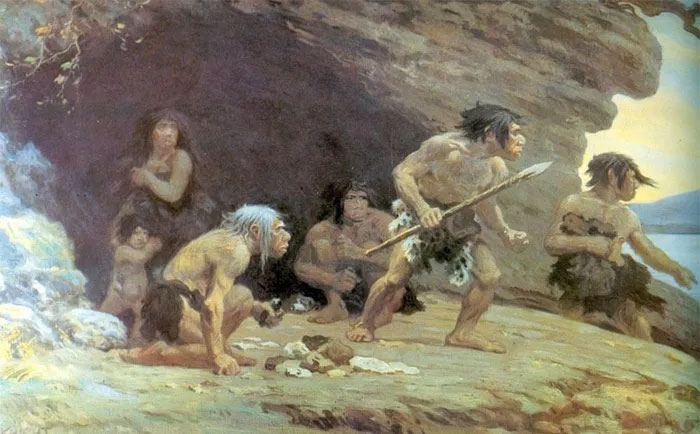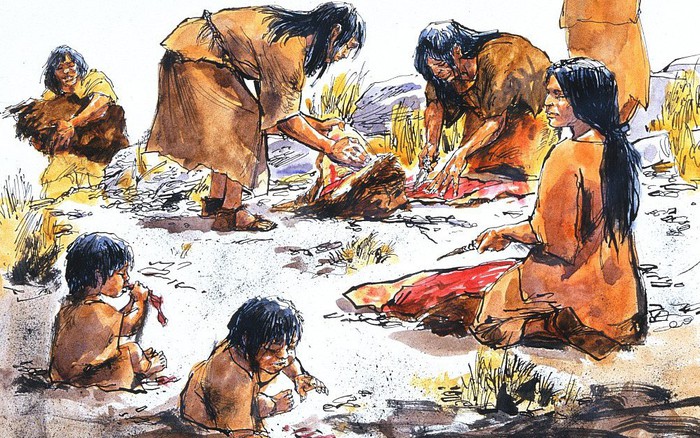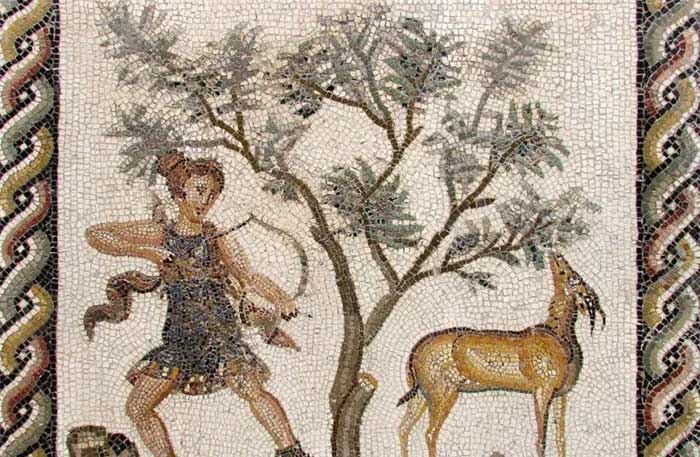According to some new research, prehistoric women not only regularly participated in hunting, but they also had more favorable physiology for this activity than men.
As a child, Cara Ocobock often wondered about the images of prehistoric people portrayed on TV, books, comics and cartoons: “men hunting “ with spears in hand , “women gathering” ” with a baby strapped to his back and a basket of seeds in his hand.
“It’s an image people often see, an assumption we all have in our heads, and is included in natural history museums” – Ocobock shared.
Years later, Ocobock became an Associate Professor in the Department of Anthropology, University of Notre Dame. As she researched human physiology and prehistoric evidence, she discovered that many assumptions about prehistoric men and women were not entirely accurate . To date, the evolutionary view that men are fundamentally biologically superior to women is accepted, but this interpretation does not tell the whole story.
With his colleague Sarah Lacy – an anthropologist at the University of Delaware, Ocobock simultaneously published two studies in the American Anthropologist magazine released in November 2023. Speaking about his and his colleagues’ studies, Ocobock said: “Instead of seeing this as a way to erase or rewrite history, our studies only try to edit the part of history that has been erased.” leave the role of women out of it “.
 Familiar illustrations from prehistoric times: men hunted and did dangerous work, while women took on lighter tasks. (Photo: Internet).
Familiar illustrations from prehistoric times: men hunted and did dangerous work, while women took on lighter tasks. (Photo: Internet).
Hormones – “silent hero”

In their physiologically oriented study, the two researchers explain that prehistoric women were fully capable of performing the difficult physical work of hunting prey , as well as being able to hunt successfully in long periods of time. From a metabolic perspective, Ocobock said, women’s bodies are better suited to activities that require endurance , ” this factor played an important role in prehistoric hunting, because they would have to do Let the prey gradually become exhausted before the actual killing begins.
Two factors that greatly contribute to increased metabolism are the hormones estrogen and adiponectin , which are usually more abundant in the female body. These two hormones play an important role in helping the female body regulate glucose and fat levels – for sports activities, this function is most necessary.
In particular, estrogen helps regulate fat metabolism by encouraging the body to use stored fat for energy before the body exhausts its carbohydrate stores. “Because fat contains more calories than carbs, it burns longer and slower, which is a stored energy that can help us function longer and delay fatigue,” Ocobock explains.
Estrogen also protects cells in the body from being damaged by high temperatures when we perform physical activity. “For me, estrogen is truly the unsung hero of life” – Ocobock said – “It is very important for cardiovascular health, metabolism, brain development and injury recovery “.
The hormone adiponectin also enhances fat metabolism, while limiting carbohydrate and/or protein metabolism, allowing the body to stay active for longer periods of time, especially over long distances. In this way, adiponectin can protect muscles from weakening and allowing them to work sustainably.
According to Ocobock and Lacy, prehistoric women’s body structure itself also had advantages in endurance and efficiency for hunting. “Women often have wider hips, they can rotate their hips, lengthening their stride. The longer the stride, the less metabolic it is, and the farther you can go. , faster” – Ocobock explained.
“If we look at human physiology this way, we can think of women as marathon runners, and men as weightlifters”.
 A mosaic depicting the moon and hunting goddess Artemis of Greek mythology. (Photo: Wikimedia Commons).
A mosaic depicting the moon and hunting goddess Artemis of Greek mythology. (Photo: Wikimedia Commons).
Archeology reveals more about “female hunters”
Some archaeological findings show that prehistoric women not only suffered injuries from dangerous close-range hunting (like men), but it was also an activity they considered respected and appreciated.
“We have reconstructed Neanderthal hunting as an individual and close-range hunt, meaning the hunter often had to find a way to sneak under the prey before killing them ” – Ocobock said, “When we look at the fossil record of prehistoric humans, we see that both women and men have similar injuries”.
Ocobock describes these traumatic injuries as similar to injuries suffered by modern-day bullfighters (rodeo clowns) – injuries to the head and chest when kicked by animals; Injuries to limbs when bitten or broken bones. “We found that the injury patterns and injury rates were equal in women and men,” she said, “So both sexes are involved in large-scale hunting. ambush style”.
Then there is evidence of female hunters during the Holocene period in Peru , where women were buried with hunting weapons. “Normally, people will not be buried with something unless it was important to them, or if it was used frequently while they were alive.”
“Furthermore, we have no basis to believe that prehistoric women gave up hunting when they were pregnant, breastfeeding or holding children” – Ocobock added, “we also We have not seen in the distant past any signs of the existence of a sexual division of labor.
According to Ocobock, in prehistoric societies, survival was an activity that required cooperation. “Groups do not have enough people to assign each person a separate task. Everyone must have general skills to survive”.
Through the above research, the two authors hope that people will change long-held beliefs that women are physically weaker than men .
Ocobock believes that the scientific community must be extremely cautious about how today’s biases can affect the way we understand the past.
“We cannot immediately assume about someone’s abilities, based only on the gender we classify ourselves after looking at them ” – Ocobock concluded.





